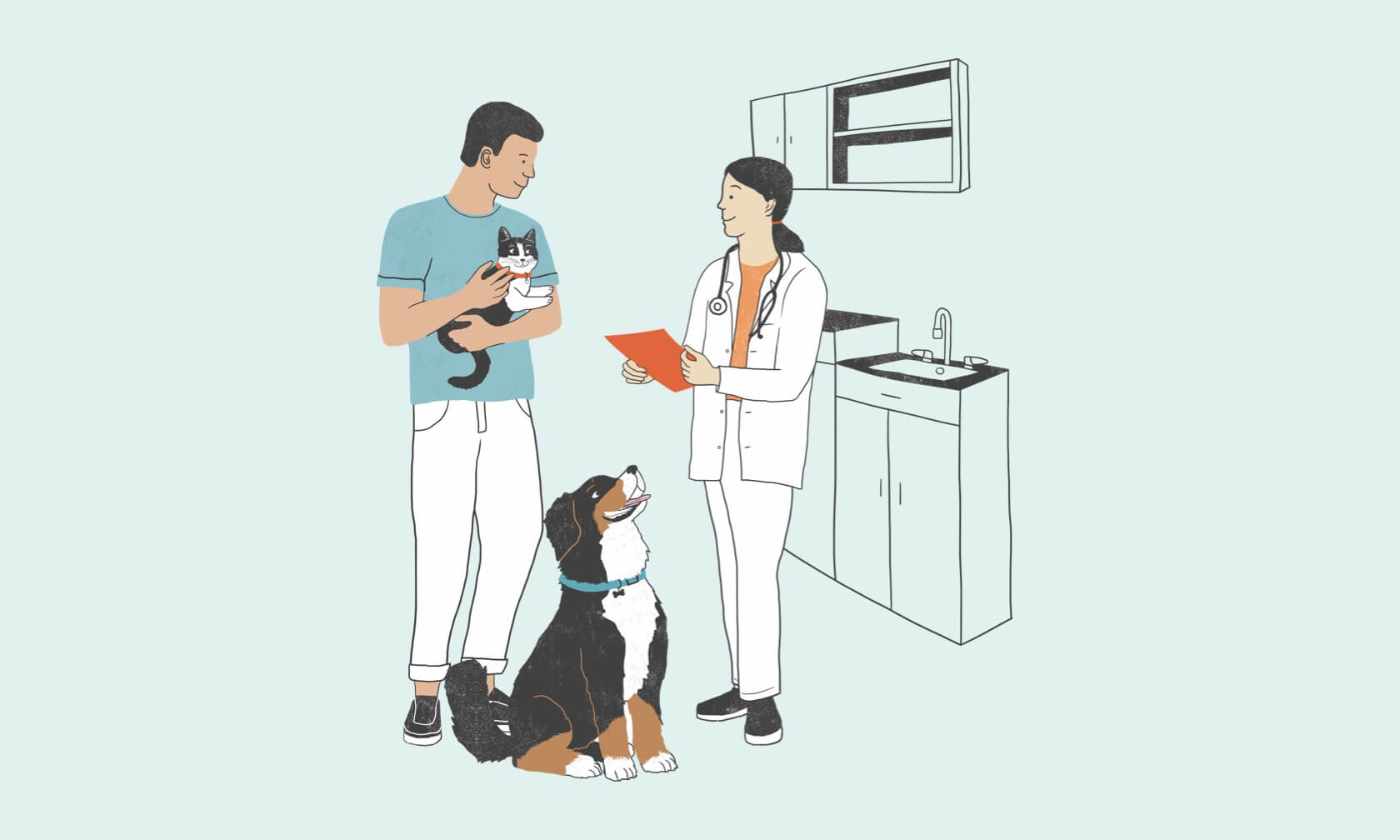Feline leukemia virus (FeLV) is an infectious disease of cats that suppresses their immune system, making them susceptible to infections. Because it can be easily spread from one cat to another, it's one of the most common infectious feline diseases, affecting 3.1% of all cats in the United States[1]. It's a disease that can go undetected for quite a while, and there's no cure. FeLV can ultimately cause cancer in cats, and it’s one of the few cancers in any species that can be prevented via vaccination.
How Can My Cat Get Feline Leukemia?
FeLV is transmitted from other infected cats "shedding" the virus — a time when the virus is replicating in the body and released into the environment through their saliva, nasal secretions, urine, feces, and milk. This means cat-to-cat transfer may occur during grooming, through bite wounds, and even by simply sharing feeding dishes and litter boxes. It can also be transmitted from infected mother cats to their kittens while still in the womb or nursing.
Risk Factors for Feline Leukemia
Beyond cats who have close contact with infected cats, the American Association of Feline Practitioners (AAFP) has identified several other risk factors[2] for FeLV:
- Having access to the outdoors (even if it is in porches or screened-in catios)
- Inter-cat fighting and aggression
- Illness (especially oral disease, abscesses, or respiratory tract disease)
- Kittens born to an infected mother
- Male gender
Can Indoor Cats Get Feline Leukemia?
It's important to remember that indoor cats can be infected with FeLV; they're just less likely due to the reduced chances of being exposed to another cat who is already infected with FeLV. The risk increases if they spend any time outside or with other cats who have not tested negative (even cats that hang out in screened in rooms or catios may have saliva contacts with other cats).
Does a Cat's Age Make Them Vulnerable to Feline Leukemia Virus?
Age can also play a role in a cat's susceptibility to infection and the severity of symptoms. Kittens have the highest risk of infection and progressively worsening symptoms over the course of their lives[3]. However, adult cats may be susceptible to FeLV infection after long-term exposure[4].
Symptoms of Feline Leukemia Virus
It's common for cats to show no signs of the disease during the early stages of an FeLV infection. Over time, which can be weeks, months, and even years, symptoms may surface, including:
- Development of cancer tumors and leukemia
- Loss of appetite, progressive weight loss
- Poor coat condition
- Enlarged lymph nodes
- Persistent fever
- Pale gums and other mucus membranes
- Inflammation of the gums (gingivitis) and mouth (stomatitis)
- Infections of the skin, urinary bladder, and upper respiratory tract
- Persistent diarrhea
- Seizures, behavior changes, and other neurological disorders
- A variety of eye conditions
If your cat shows any of these symptoms, it's essential to have them checked out by your veterinarian.
FeLV Testing and Diagnosis
Because this disease is highly contagious and infection comes with serious health consequences, the AAFP recommends that cats should be tested when they are[2]:
- Sick, regardless of age, despite previous negative test results or vaccination
- About to be adopted or brought into a new home, regardless of age
- At risk of exposure even if their most recent test was negative
- If their FeLV status is unknown (for example, found or rescued cats)
- About to be vaccinated against FeLV or FIV (feline immunodeficiency virus)
Testing is done using a small blood sample. The first test is typically used as a screening tool and can be performed at your veterinary clinic with results in as little as 20 minutes. A negative result from the first screening test is highly reliable. However, if the result is positive, the next step is to have a confirmatory test done by an outside laboratory, which takes a couple of days.
FeLV can usually be detected in the blood within 30 days of exposure (though sometimes it can take longer). If your cat tests negative, but they could have been exposed to FeLV less than 30 days ago, your veterinarian will likely want to repeat the test at least 30 days after their last potential exposure.

Treatment of Feline Leukemia Virus
Unfortunately, there is no cure for FeLV. But that doesn't mean hope is lost. For FeLV-positive cats, long term management should focus on the treatment of secondary diseases. Prompt attention should be given to any medical problems that your FeLV-infected cat develops, and preventive healthcare is paramount. Veterinary checkups should be done every six months.
Is There a Vaccine for Feline Leukemia?
Fortunately, there is a vaccine for FeLV. Talk to your veterinarian about your cat's risk factors and whether they should receive the vaccine. The AAFP recommends FeLV vaccination for[2]:
- Kittens and young adult cats under one year of age
- Cats who go outdoors
- Cats who have direct contact with cats of unknown FeLV status or in high turnover situations, such as foster homes and other group housing
- Cats who live with FeLV-positive cats
ZPC-00956R1
- Burling AN, Levy JK, Scott HM, et al. Seroprevalences of feline leukemia virus and feline immunodeficiency virus infection in cats in the United States and Canada and risk factors for seropositivity. J Am Vet Med Assoc 2017; 251:187–194.
- Little, S., Levy, J., Hartmann, K., Hofmann-Lehmann, R., Hosie, M., Olah, G., & Denis, K. (2020). 2020 AAFP Feline Retrovirus Testing and Management Guidelines. Journal Of Feline Medicine And Surgery, 22(1), 5-30.
- Hartmann, K., & Levy, J. (2017). Feline leukemia virus infection. In Textbook of veterinary internal medicine (8th ed., pp. 2442-2455). St. Louis, MO: Elsevier Saunders.
- Grant, C., Essex, M., Gardner, M., & Hardy, W. (1980, March). Natural feline leukemia virus infection and the immune response of cats of different ages. Retrieved September 30, 2020, from https://www.ncbi.nlm.nih.gov/pubmed/6258787.



